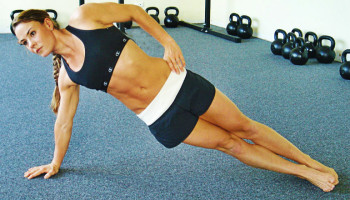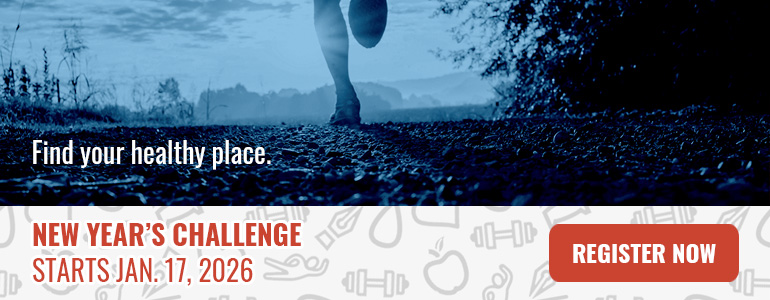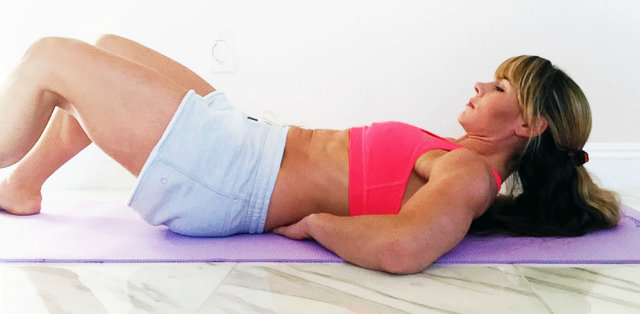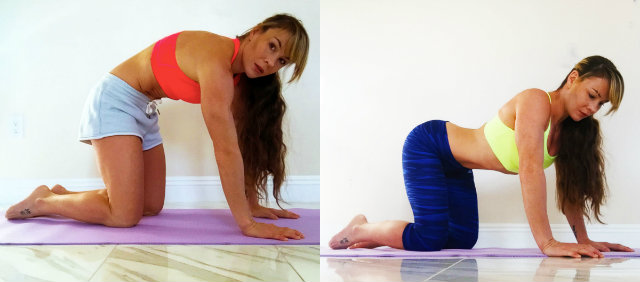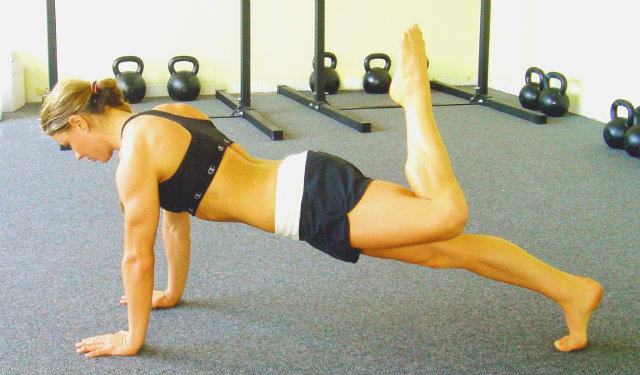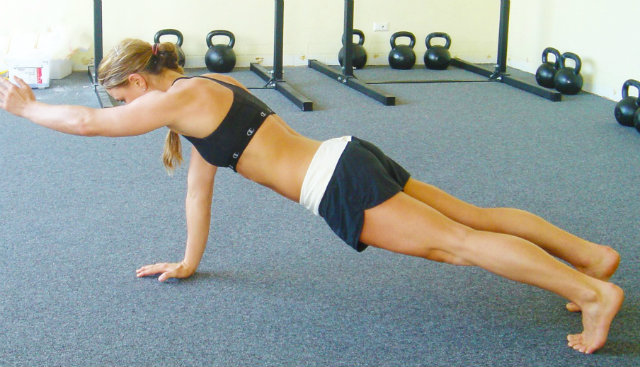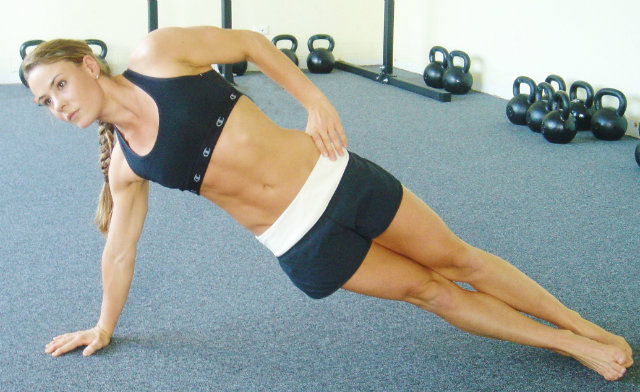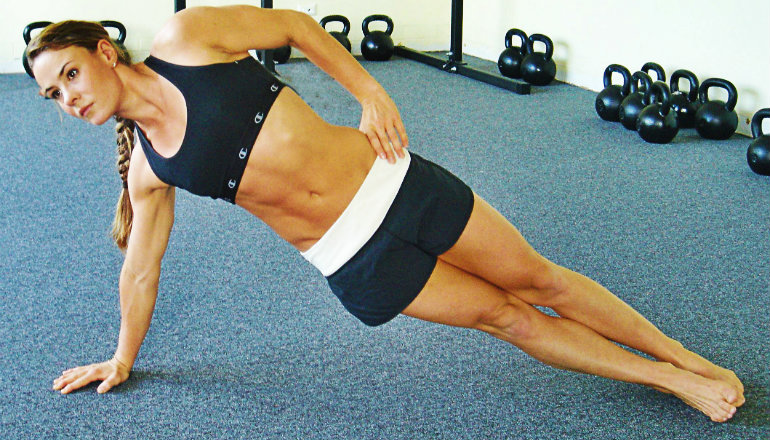 Reading Time: 5 minutes
Reading Time: 5 minutesWe are bombarded with social media, magazine ads, and infomercials of tanned, shiny men with rippling washboard abs or fit chicks in sports bras with tight, flat, super-smooth stomachs. And endless crunches are the answer to achieving that illustrious six-pack or tiny waistline – or so most media hype would have you believe.
In reality, regardless if you are a guy, girl, or new mother who wants to tighten her tummy, doing endless crunches or sit-ups is not the way to get a flat stomach. In particular, if you have recently had a baby, endless crunches may not even be possible because your abs have been so stretched and weakened.
Instead, try these exercises that work the transverse abdominis – the inner core abdominals. The first exercises are perfect for beginners and mothers who have recently had a baby, while the next couple of exercises are more advanced and ideal for those who have already incorporated the basics into their core training workouts.
Quick Anatomy Lesson: Your Abdominal Muscles
In order to best train your abs it might be beneficial to know the muscles involved, how they work and which ones are really the most effective to achieve that flat tummy. The abdominal muscles, which connect the rib cage to the pelvis, consist of four groups:
- The internal and external obliques, which sit at the sides and are involved in twisting
- The rectus abdominis, which sit on either side of the belly button from ribs to pelvis and are involved with front flexion or the sit-up movement
- The transverse abdominis, the innermost abdominal muscles that wrap around your waist like a corset and are involved in posture and supporting your spine.
The reason why crunches or sit-ups have become the go-to exercise for a flat stomach is because they primarily work the rectus abdominis, which are famous for their six-pack appearance. When you see someone with a six-pack, you instantly think they have a strong, toned stomach, though that is not necessarily the case.
In truth, the other muscle groups, the obliques and the transverse abdominis, may be lacking in strength and that can lead to core imbalances, back pain, and poor posture. Have you ever seen those people with six-packs but their tummies stick out? That is because their transverse abs are untrained. Their inner corset is so weak they can’t even pull their stomachs in. What good is a six-pack if when you stand sideways your stomach sticks out like a bloated belly?
The Real Focus for a Flat Stomach: Transverse Abdominis
If I were to focus on just one group of abdominal muscles, I would focus on the transverse abdominis, the deep inner core muscles. The transverse abs are the muscles that are really responsible for a flat stomach – these are the ones you use to “suck your tummy in” so you look five pounds slimmer in all your photos!
The transverse abs are also the most important muscles of all the abdominals because they work in conjunction with the quadratus lumborum, multifidus, and erector spinea to support your spine. These muscles need to be worked just as much, if not more, than the rectus abdominis to create a balanced body free of back pain, possessing a strong functional core, and sporting a flat-looking mid-section.
To identify which muscles are your transverse abdominis, pretend for a moment that you are blowing up a balloon. Feel the pressure inside your tummy? Those are your transverse abs. These muscles are used every day when you cough, sneeze, or go to the toilet. For mothers, they also come into play when giving birth.
And, as mentioned before, these muscles are also used when you suck in your stomach. So imagine what it would be like if these muscles were strong and looked “sucked in” all the time?
Your Ab-Work Homework
Here are some exercises that work the transverse abdominis. The first two exercises are perfect for beginners and mothers who have recently had a baby.
Press your spine into the floor for 1-3 seconds at a time, and do 10-15 rounds. Make sure to breathe when you are pressing your spine down. When you activate your transverse abs, the muscles expand at the top and the bottom and this puts pressure on your diaphragm, making it hard to breathe. It is really important to keep breathing through this process.
Do between 10-15 reps of angry cat-happy cat and hold each position, squeezing for 2-3 seconds.
The following exercises are more advanced. These are plank holds with a difference. While extending a leg or an arm, you must keep your shoulders and hips level and keep your spine as straight as possible without sagging your hips (that means no “banana” back)
I recommend to do these plank holds by doing 10 arm raises and 10 leg raises on each side, three times through, about three times per week. It might be easiest to incorporate these at the end of your workout before stretching.
Here is a more advanced plank hold that incorporates the obliques. Hold for 10-15 seconds and do this 3 times on each side.
Watch this video to see a few of these exercises in action
— plus some extra variations for an added challenge!
No More Endless Crunches
Forget about all those sit-ups and crunches. Plank holds are more important, and I guarantee that by being diligent with transverse abdominis exercises, you will have that flat stomach along with a super strong core, less back pain (if any), and improved posture. So quit pretending to “suck it in” and strengthen those muscles for real.
